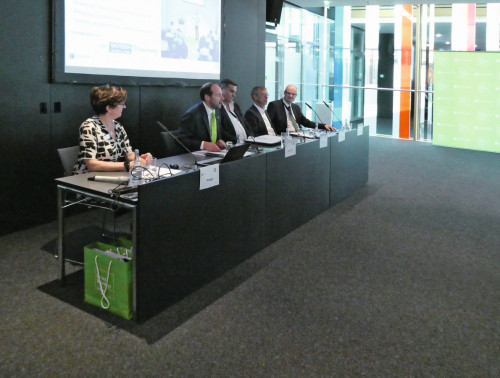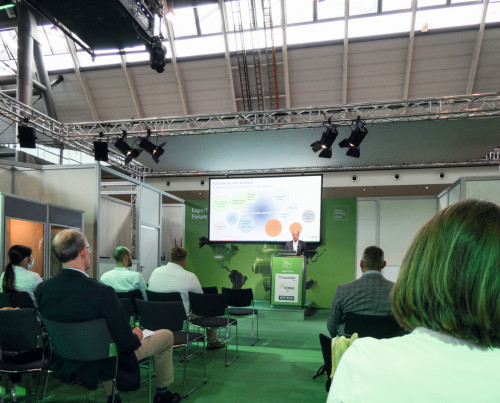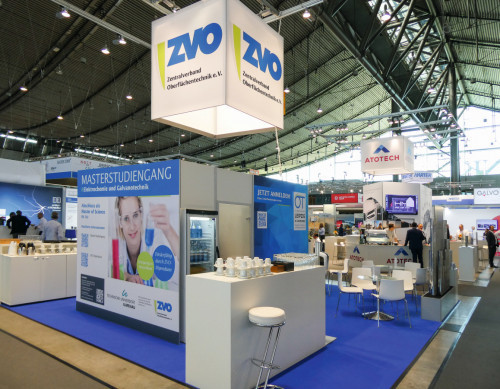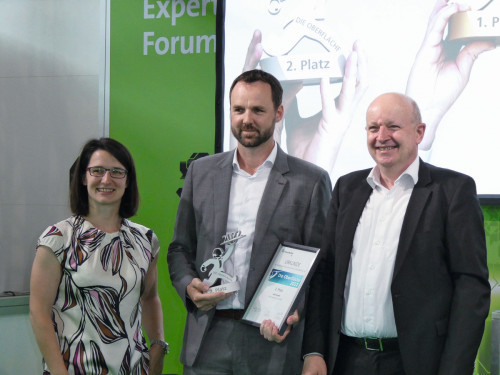Although Surface Technology 2022 will not be able to build on the success of 2018, it will once again offer the industry identification and a comprehensive view of the coating industry after a long coronavirus break.
Four years after the last Surface Technology in Stuttgart, the most important trade fair for electroplating and surface technology returned as an in-person event for the first time from June 21-23. This year's showcase was unable to keep up with the "brilliant response from 2018", which Exhibition Director Hendrik Engelking referred to at the opening press conference on the first day of the trade fair. Nevertheless, it was a successful trade fair that offered a comprehensive showcase of the coating industry in difficult times. 220 exhibitors, around one in three of them from abroad, presented their products and services to around 3,000 visitors in the largest hall of the Stuttgart trade fair center. The goal of attracting 75% of the 2018 exhibitor volume to participate in the trade fair was thus achieved. Even though exhibitors from China, for example, did not take part in the trade fair due to coronavirus restrictions, the international response was impressive. Companies from 18 countries were represented in Stuttgart. Italy, Switzerland, Turkey and the UK followed Germany in the top 5.
Walter Zeschky, Chairman of the Board of the German Surface Technology Association (ZVO), provided an overview of the industry. He described the status quo of electroplating and surface technology as very good despite rising procurement and energy costs, supply problems, staff shortages and regulatory requirements such as REACh. Due to "adverse circumstances", however, the industry is running on sight. Among other things, chromic acid and components for control and automation are in short supply. According to the ZVO association representative and electroplating entrepreneur, the automotive industry in particular has been experiencing a downturn since 2018. Around 60 companies presented innovations, products and services at the joint ZVO stand.
In addition to Dr Martin Riester from the German Engineering Federation (VDMA), who described his association's efforts to establish the uniform OPC UA interface standard for digitalization in surface technology, Dr Jürgen Hofinger, Managing Director of Biconex from Dresden, also had his say. Among other things, his company wants to manufacture radar systems for autonomous driving. The company has its own production facility in Radeberg near Dresden, where plastics are metallized without the otherwise problematic process chemistry. Dr. Hofinger also spoke about this topic at the Surface Technology specialist forum. A total of 48 short presentations were offered to the audience. The spectrum of presentations ranged from wastewater-free pre-treatment and climate-friendly drying to hydrogen embrittlement, digitalization and augmented reality in electroplating technology, REACh issues and surface treatment processes and systems.
One of the highlights of the trade fair was the presentation of the "The Surface" innovation award at the specialist forum by the Fraunhofer Institute for Manufacturing Engineering and Automation (IPA). The criteria for the award were degree of innovation, sustainability and industrial feasibility. Dürr Systems AG won the race with its overspray-free paint application with EcoPaintJet Pro. The jury member Michael Hilt, Managing Director of the Forschungsgesellschaft für Pigmente und Lacke e. V. (Research Association for Pigments and Paints), explained the decision in favor of Dürr's development: "Completely overspray-free wet painting could potentially become a disruptive innovation. The second prize went to Asis GmbH from Landshut, which has developed a precise and repeatable solution for the inspection and removal of defects with an automatic finish for paintwork. The Molecular Plasma Group S.A. from Fötz in Luxembourg has developed a technology that enables surface functionalization through the covalent binding of organic substances by means of a cold atmospheric plasma on any substrate. The company was awarded 3rd prize for this.
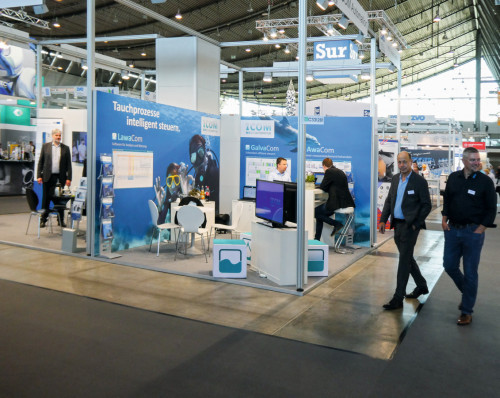 Surtec develops and sells specialty chemicals for surface technology and had a large stand at the trade fair
Surtec develops and sells specialty chemicals for surface technology and had a large stand at the trade fair
Meanwhile, the Leuze Verlag stand was well attended, with the focus on the trade journal Galvanotechnik as well as the numerous trade publications. The new e-learning courses for young and old were also presented for the first time, including courses on calculating bath additions, chemistry, introduction to electroplating and occupational safety (more on this at www.gtfy.de). At the stand, fire protection, BREF (Best Available Techniques Reference) and the current situation in the electroplating industry were among the topics discussed with electroplating advisory board members Wolfram Willand and Herbert Hauser. It was a lively exchange, which many other exhibitors also responded to positively despite fewer visitors than in 2018. Wherever you went, the quality of the discussions was praised. In addition, the joy that the industry was able to meet again prevailed.
Photos: Robert Piterek


